The Belarusian potato variety Volat is cultivated both for personal use and for sale. Farmers appreciate this variety for its high yield, while home gardeners value it for its excellent taste, high protein content, and rich vitamin C levels. Despite being a relatively new variety, Volat has gained steady popularity and continues to win over new fans.
Table of contents
About the Potato Variety
The young potato variety Volat is rapidly gaining popularity due to its high yield, strong disease resistance, and exceptional taste of the tubers.
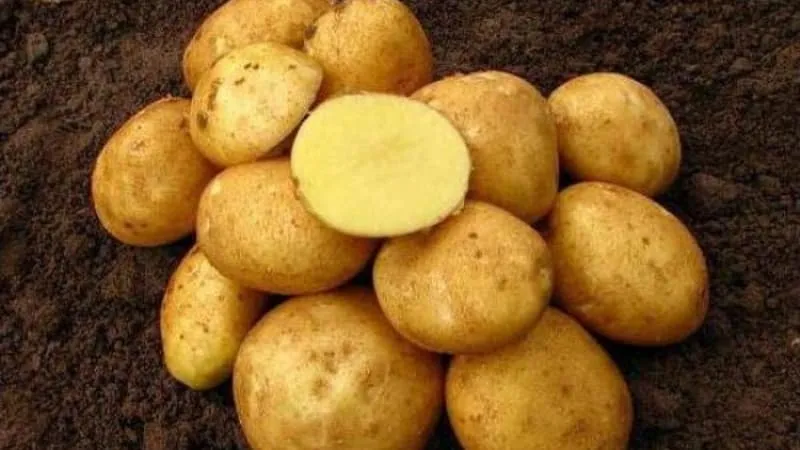
Origin and Development
The Volat potato variety is a new cultivar developed by breeders from Belarus. The originator is the Scientific and Practical Center of the National Academy of Sciences of Belarus for Potato and Vegetable Growing. It was registered in the European Plant Variety Database in 2014.
Despite its short existence, the variety has already been chosen for commercial cultivation by hundreds of private entrepreneurs and farming enterprises. The combination of high yield and low maintenance has attracted the attention of those involved in vegetable farming for resale. Farmers note strong consumer demand for these potatoes, both in retail and wholesale markets.
Description and Appearance
This is a table variety, with tubers weighing 90-160 g on average and an oval shape. The eyes are few and reddish in color. The skin is yellow and dense enough to protect the tubers from mechanical damage. The flesh is light yellow, with excellent taste. The potatoes are notable for their high protein and vitamin C content (up to 30%), enhancing their nutritional value.
Starch content ranges from 11% to 19%. The mature tubers are perfect for frying and baking. They have moderate fluffiness, making them suitable for boiling and mashing.
Large enterprises purchase these potatoes for processing into chips, fast-food products, and starch production.
The variety is well-suited for long-term storage, with a shelf life of 94-96% of the total yield. The tubers retain their taste and marketability even during extended transportation.
The photo shows Volat potatoes.
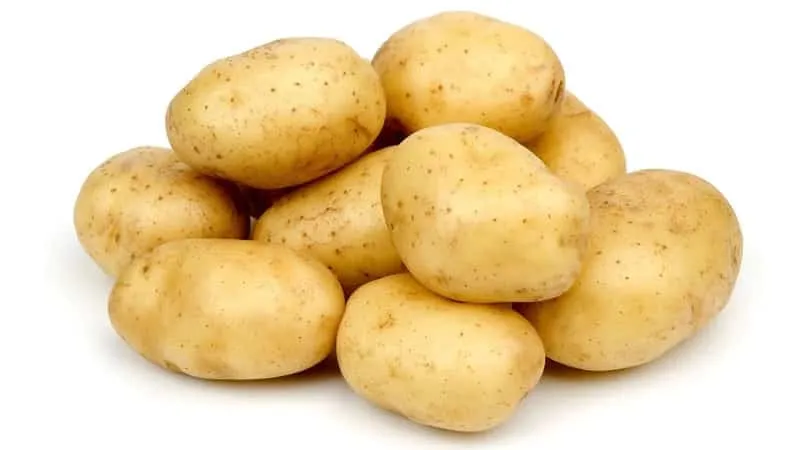
Plant Characteristics
The bush is medium-sized, with a sturdy stem and a well-developed root system. The leaves are small and dark green. During flowering, white medium-sized flowers form neat corollas.
The maturation period is mid-season, with full technical ripeness reached 85-95 days after planting. The variety adapts well to drought but is not frost-resistant.
The plants are resistant to golden nematodes, potato canker, viral diseases, fusarium rot, and anthracnose. However, they have no resistance to late blight, so preventive measures are necessary.
Yield
Yield is the standout feature of this variety. Up to 60 tons can be harvested per hectare, significantly outperforming other high-yielding varieties. This makes Volat a desirable choice for fields across Europe.
All tubers are uniform, attractive, and resistant to damage. About 98% of the harvested produce retains its marketable appearance.
How to Grow Volat Potatoes
The cultivation technique follows standard procedures. The plants require proper watering, timely fertilization, and hilling. They adapt quickly to soil composition and climatic conditions.
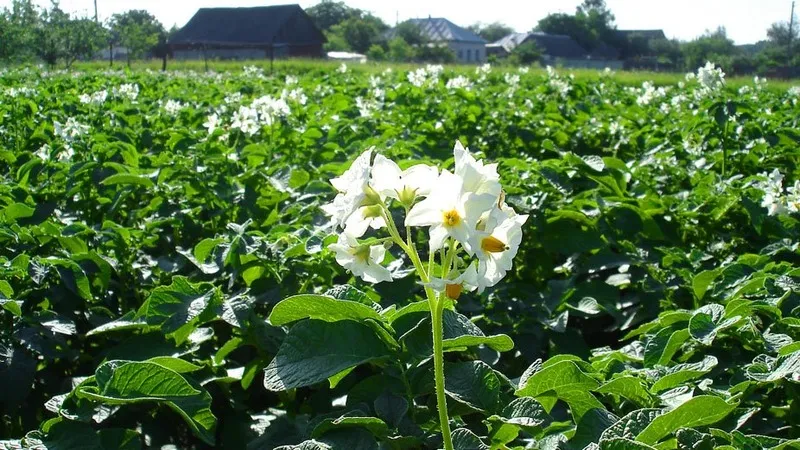
Pre-Planting Preparation
One month before planting, prepare the seed potatoes. The optimal weight is no more than 100 g. Larger tubers should be cut into pieces.
Inspect the potatoes carefully and discard damaged ones. Place the remaining seed potatoes in a well-lit room for sprouting. Only sprouted tubers should be planted to ensure germination. The optimal room temperature is +15…+17°C.
Before planting, treat the tubers with a growth stimulant to speed up sprouting and protect against fungal diseases. Commonly used products include "Epibrassinolide," "RootBoost," and "BioGrow."
By the end of sprouting, the tubers may develop a greenish tint due to increased solanine accumulation in the skin. Solanine is a toxic glycoalkaloid, but greened potatoes are ideal for planting—solanine deters rodents.
Note! Field mice pose the greatest threat to planted potatoes.
Planting Time, Scheme, and Rules
Volat thrives in light yet fertile soil, so enriching it with nutrients before planting is essential. Prepare the soil in autumn by digging and adding compost and wood ash. Repeat the process in spring. Digging not only loosens the soil but also eliminates parasitic insect larvae and fungal spores.
Planting begins in late April or early May when the soil warms to +10°C and daytime temperatures reach +16…+18°C. If late frosts or heavy rains are forecast, delay planting to avoid damaging the seed potatoes.
Planting scheme: 35 cm between holes, 70 cm between rows. This spacing ensures easy maintenance, proper aeration, and sufficient sunlight, reducing disease risks.
Place the tubers no deeper than 10 cm. Add a small amount of wood ash to each hole before covering with soil.
Note! When cutting large potatoes, ensure each piece has at least three sprouts to guarantee germination.
Further Care
The variety is low-maintenance, requiring minimal attention, time, or effort.
Watering
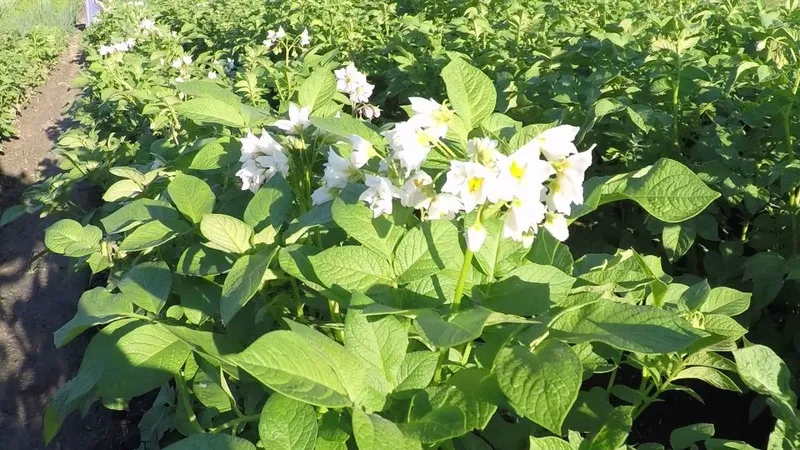
Abundant watering is crucial during flowering and tuber formation. However, avoid overwatering, as excess moisture promotes late blight.
Drip irrigation is ideal—it ensures roots receive enough moisture without oversaturating the soil.
After watering, loosen the soil to improve oxygen flow to the roots, enhancing plant growth.
Weeding is essential for pest control and nutrient preservation. Remove weeds with roots and mulch the beds. Mulch retains moisture and suppresses new weed growth.
Note! Peat and straw are commonly used as mulch.
Hill the plants three times per season. Begin when seedlings reach 10-12 cm. Pile soil from between rows onto the plants—higher hilling protects tubers from sunlight and pests.
Fertilization
Fertilizers boost productivity and strengthen immunity. Apply the first dose when seedlings reach 20-25 cm. If growth is slow, fertilize earlier using nitrogen-based compounds or ammonium nitrate.
The second application occurs during flowering. At this stage, organic fertilizers are best. A diluted poultry manure solution (1:10) works well. Water between rows after moistening the soil.
The third fertilization involves a full mineral complex, applied one week before tuber formation. Phosphorus and potassium are particularly effective.
Note! Nitrogen accelerates bush growth and foliage development.
Disease and Pest Control
The most effective fungicide against late blight is "Fungisan." It also serves as a preventive treatment. Many gardeners spray seedlings from the start of planting to ensure plant health.
Wood ash is another remedy—sprinkled on plants, it protects against fungal diseases and pests.
For Colorado potato beetles, use "Confidor" or "Prestige." For potato aphids, apply the insecticide "Actara." A tobacco infusion also repels aphids and whiteflies. To prepare, boil 500 g of tobacco in 1 L of water for an hour, dilute in 10 L of water, and spray plants.
Note! Ladybugs are natural aphid predators. Planting dill attracts them—ladybugs actively eliminate aphids until autumn.
Harvesting, Storage, and Use

Before harvesting, mow the foliage. Burn the leaves to eliminate pests.
Dig up potatoes with a fork or shovel, then let them dry in the field for 2-3 hours. Store in wooden crates in a cool, dry place.
The shelf life is excellent—nearly the entire yield retains its marketability until spring.
The mature tubers are versatile in cooking—ideal for baking, frying, mashing, and more.
Large companies purchase these potatoes for processing into chips, fast food, and starch production.
Pros and Cons
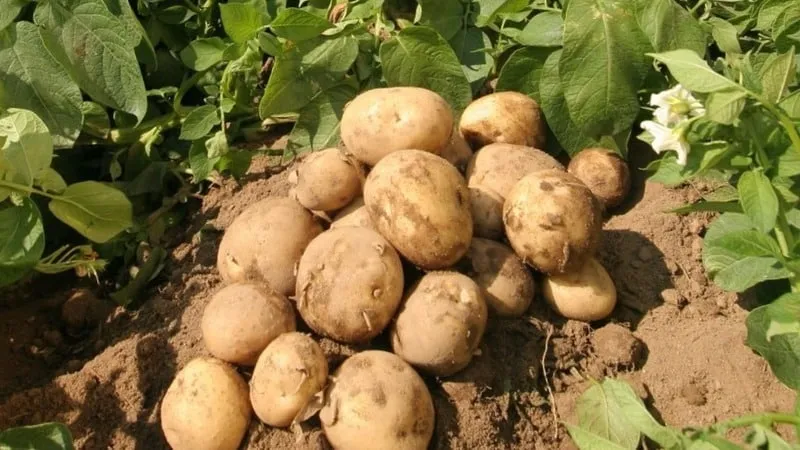
Key advantages of the Volat variety:
- suitable for cultivation across Europe;
- adapts well to drought and soil types;
- easy to market;
- low maintenance;
- high disease resistance;
- exceptional yield;
- excellent taste;
- long shelf life;
- transportability;
- versatile use.
The only notable drawback is susceptibility to late blight.
Best Growing Regions
The variety is widely grown in Poland, Germany, France, and other European countries. It thrives best in regions with light, fertile soil.
Farmer Reviews
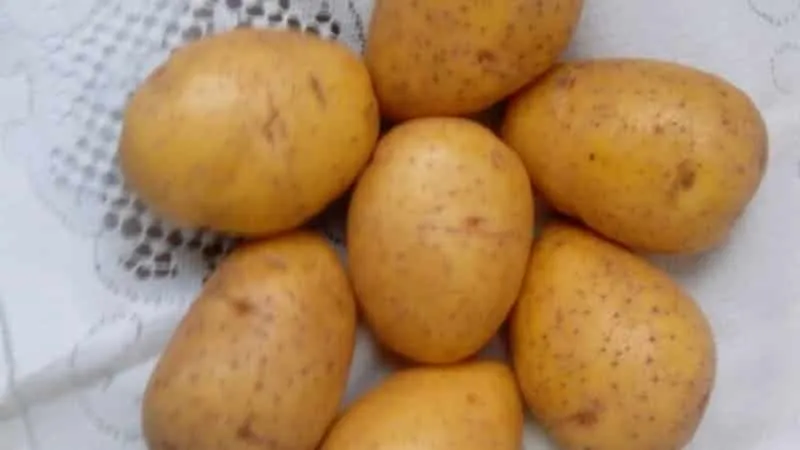
Reviews come from gardeners and farmers across Europe. Here are some opinions:
Thomas, Berlin: “The Volat potato’s description matches reality—cultivation requires minimal effort. As a farmer, I appreciate low-maintenance crops. The potatoes sell well, and the taste is fantastic. I keep some for winter use.”
Sophie, Paris: “Last year, I saw photos online, read the description, and decided to plant Volat. My garden is small, so high yield was important. Volat delivered—plenty of uniform, tasty potatoes. Highly recommended!”
Conclusion
Volat potatoes are widely cultivated due to their high yield (up to 60 t/ha), resistance to diseases, easy care, and excellent quality.
The variety offers numerous advantages, including superb taste, high protein, and vitamin C content. These qualities ensure steady demand, making Volat a reliable choice for farmers and gardeners alike.







